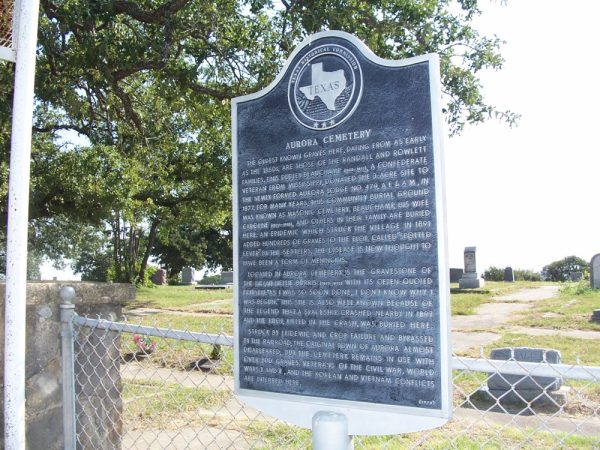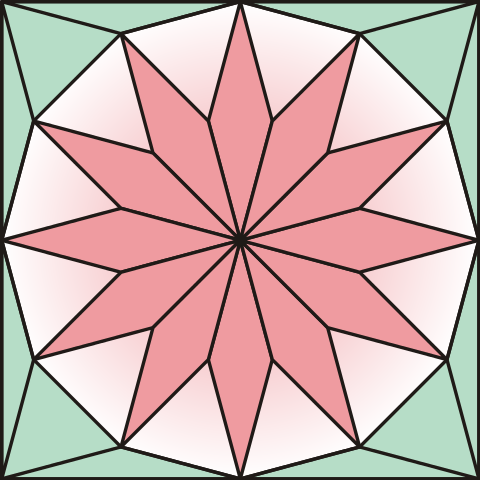The cemetery at Aurora, Texas, bears a notable marker from the state’s historical commission: “This site is also well known because of the legend that a spaceship crashed nearby in 1897 and the pilot, killed in the crash, was buried here.”
An April 1897 article by S.E. Haydon in the Dallas Morning News explains that “the airship which has been sailing through the country” had had a fatal accident in Aurora:
It was traveling due north, and much nearer the earth than ever before. Evidently some of the machinery was out of order, for it was making a speed of only ten or twelve miles an hour and gradually settling toward the earth. It sailed directly over the public square, and when it reached the north part of town collided with the tower of Judge Proctor’s windmill and went to pieces with a terrific explosion, scattering debris over several acres of ground, wrecking the windmill and water tank and destroying the judge’s flower garden.
The pilot, purportedly a Martian, was carrying papers bearing indecipherable hieroglyphics. The ship, “built of an unknown metal,” was “too badly wrecked to form any conclusion as to its construction or motive power.”
The story has been inspiring investigations for more than a century, but one item stands out. In a 1980 interview in Time magazine, 86-year-old Aurora resident Etta Pegues said that Haydon had invented the story “as a joke and to bring interest to Aurora. The railroad bypassed us, and the town was dying.”
(Thanks, Meaghan.)





